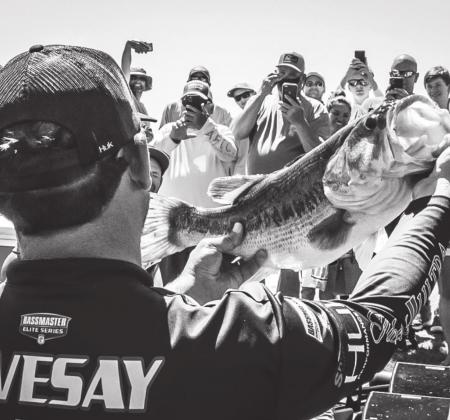QUITMAN — Patrick Walters is hoping for a storm during next week’s Simms Bassmaster Elite at Lake Fork. That sentiment runs counter to the stable weather forecast, but it’s not meteorological mayhem the South Carolina pro envisions.
Competition days will be May 19-22 with daily takeoffs from Sabine River Authority Headquarters (SRA) — Lake Fork at 7 a.m. and weigh-ins each day at the same location at 3 p.m.
“We have a perfect storm — it’s finally warming up out there, tournament week will be really hot (highs in the low to mid-90s, lows in the low 70s) and the water’s down 5 1/2 feet,” Walters said. “It is the perfect storm for the fish to funnel out and for us to catch them in big numbers offshore.”
“I think the potential for mega-bags is high. It’s going to be hard to beat the 42-pound, 3-ounce bag that (2021 winner Lee Livesay) caught last year. That was not expected. I don’t know if we’ll catch that, but the potential is there.”
Back in the fall, the Sabine River Authority of Texas started drawing down Fork’s water level to facilitate dam repairs. Jake Norman of the Texas Parks and Wildlife Department’s Inland Fisheries Division said the water reached about 6 feet below normal pool, but recent rains have brought the lake up about half a foot — the level at which it should remain for the foreseeable future.
Low water’s most immediate impact is habitat reduction. Thanks to TPWD’s stellar fisheries management work, Lake Fork bulges with quality bass in the 4- to 6-pound range, with lots of day-making kickers, many of which break the double-digit mark. The fish don’t leave when the water’s down, so they cluster in fewer spots and become more competitive.
“The lower water concentrates the fish and puts them in higher-percentage areas,” Walters said. “There are fewer good areas for them to get on. They’ve built their life on living around this one creek or this one point and they know they can go to this one point and feed on top of this shellbar.
“Well, that shellbar is out of the water, so they’ve had to relocate. The depth has changed, so there are not as many high-percentage feeding spots.” On one hand, this should help anglers more quickly dial in the more productive areas. The downside is that everyone has the same advantage.
“It’s going to make the lake fish very small,” Walters predicts. “There’s going to be a lot of people on top of each other.”


